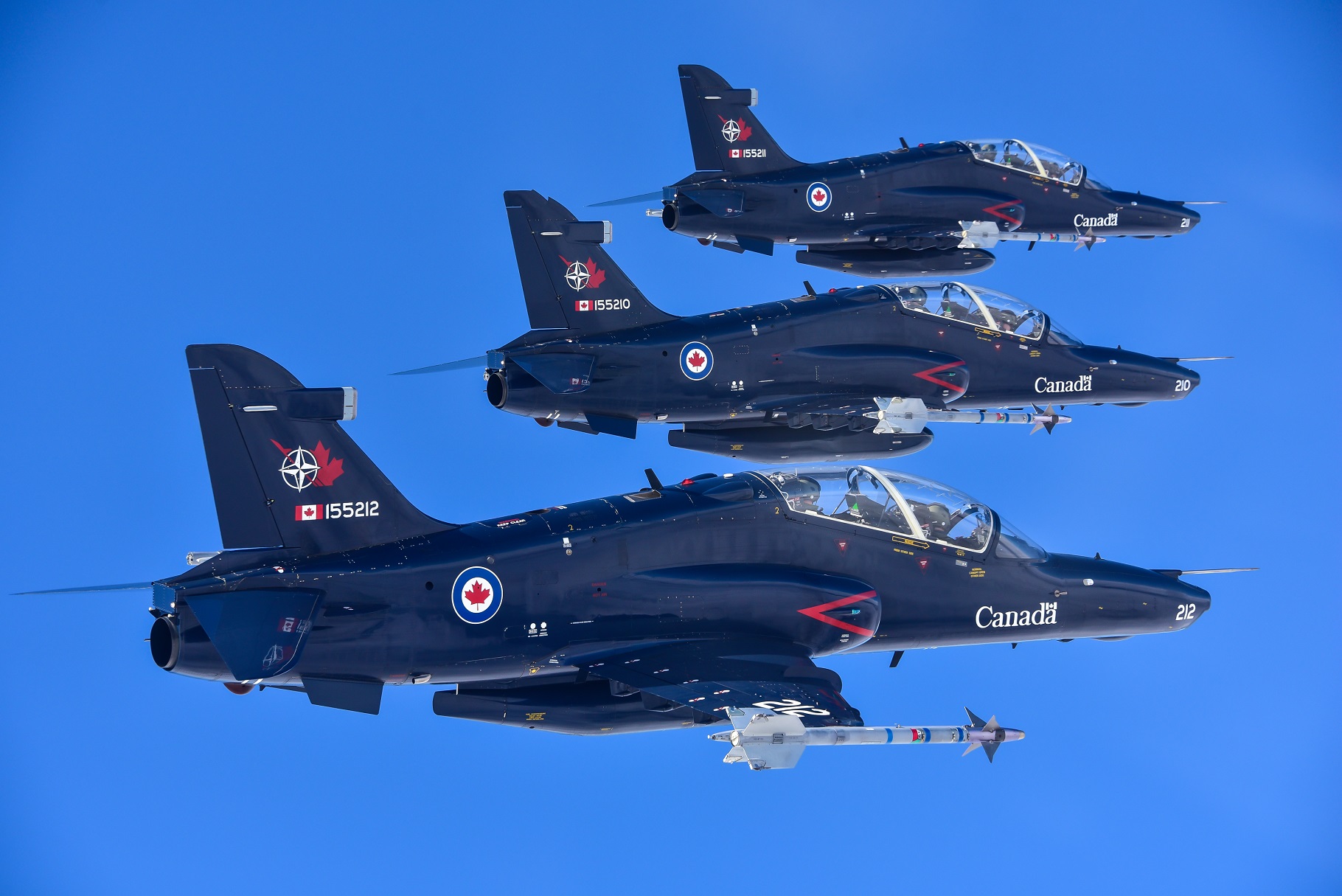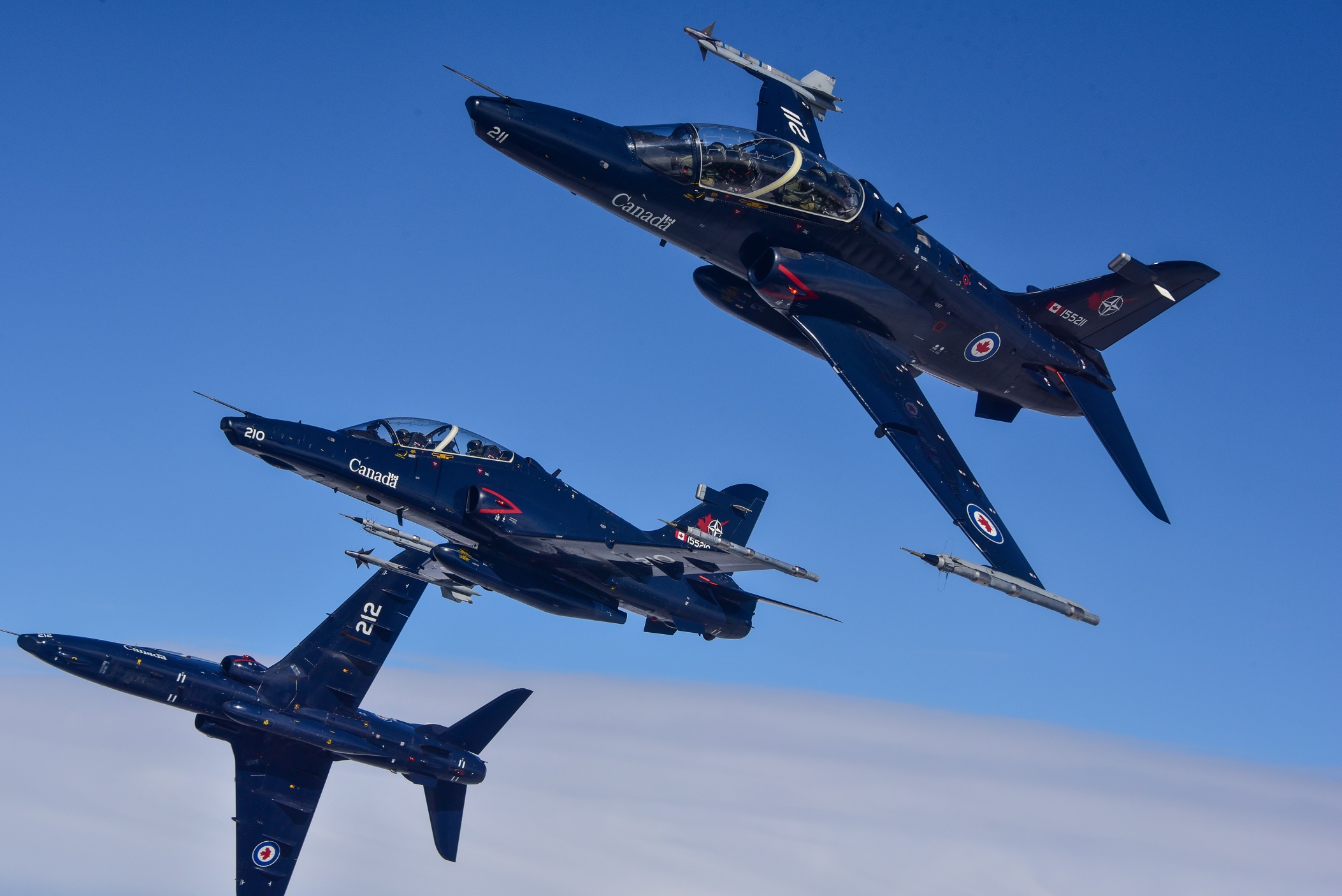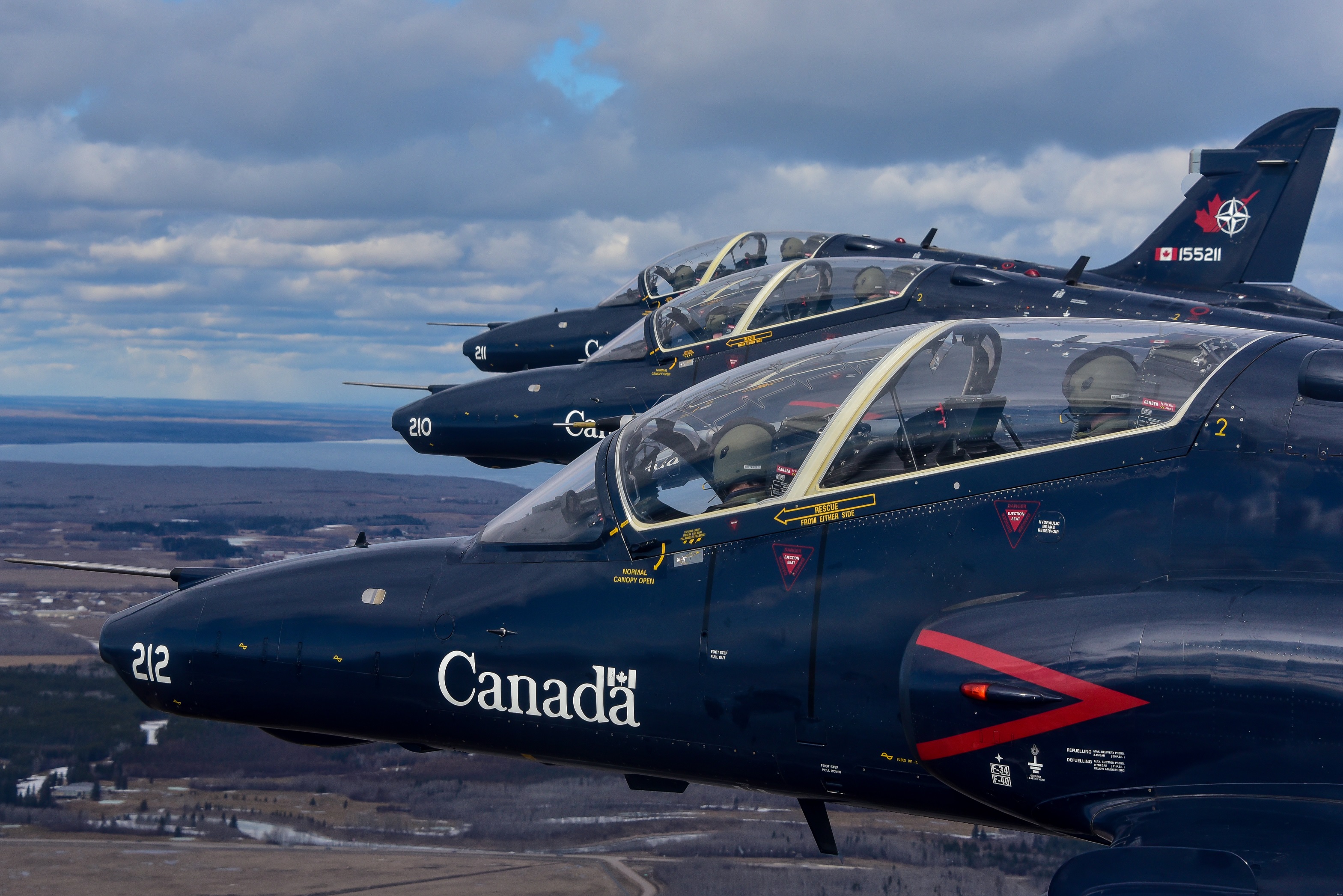Estimated reading time 6 minutes, 28 seconds.
The Royal Canadian Air Force (RCAF) has placed flying restrictions on its fleet of CT-155 Hawk fighter training aircraft following engine-related problems with variants flown by other countries.

The flying restrictions come on the heels of precautionary safety pauses that followed incidents involving United States Navy pilots and the T-45C Goshawk, a variant of the CT-155 Hawk, on Oct. 8 and Nov. 21, 2019. Both safety pauses were lifted on Nov. 4 and Dec. 3, respectively, after initial investigations into the incidents were conducted.
“This was the third worldwide engine incident since May 2019,” an RCAF spokesperson for 2 Canadian Air Division said in an email of the Nov. 21 incident. “The aircraft [involved in all three incidents] were recovered successfully and there was no injury to aircrew or a requirement for an ejection. The incidents were, however, significant enough for the RCAF to implement restrictions on the fleet of CT-155 Hawks.”
The flying restrictions include increased training on engine-related emergencies to better prepare aircrew to handle a problem if it occurs on the ground or in the air, and a reduction of non-essential flying, such as flypasts and support to public displays. Also, the Air Force is only allowing student pilots to fly Hawks that have limited hours on certain components it suspects may be related to the other engine incidents.
“The restrictions will only be lifted or modified once the root cause of the incident has been identified and Canadian technical and operational experts have determined that it is safe for Canadian Armed Forces members and NATO students to return to normal operations for the CT-155 Hawk,” said the spokesperson.
“As safety is of the utmost importance, the restrictions are being implemented for the time being in order to ensure the safety of our crews while still maximizing the availability of the aircraft for its primary role of training,” he added.

Though RCAF student pilots were unable to fly during the precautionary safety pause, they had increased access to simulators and classroom time and were able to “pursue other professional development opportunities essential to their development as officers,” said the spokesperson.
The BAE Systems Hawk, which is powered by a Rolls-Royce Mk.871 Adour turbofan engine, is a critical stepping stone in the training of fighter pilots at 15 Wing Moose Jaw, Sask., and 4 Wing Cold Lake, Alta. It is a transitional aircraft between the CT-156 Harvard II on which they receive basic flight training in Moose Jaw and the operational CF-188 Hornets based in Cold Lake and 3 Wing Bagotville, Que.
The Hawk is the only aircraft operated by 419 Tactical Fighter Training Squadron, which delivers Fighter Lead-in Training (FLIT) under the NATO Flying Training in Canada (NFTC) program in Cold Lake. NFTC, which is managed in partnership with CAE Military Aviation Training, produces between 20 and 24 fighter pilots per year, including a few students from Singapore and Hungary.
At present, there are eight students in the FLIT program in Cold Lake, four from the RCAF and four from the Republic of Singapore Air Force. There is also one student from the Hungarian Air Force flying the CT-155 at 2 Canadian Forces Flying Training School in Moose Jaw.
“In the short term, there is minimal impact on pilot training [in Moose Jaw and Cold Lake] as the primary role of the CT-155 Hawk is to provide CF-188 Hornet fighter pilot candidates,” said the spokesperson. “The CF-188 operational training unit, 410 Tactical Fighter (Operational Training) Squadron, currently has sufficient students to start the next fighter pilot course in January 2020.”
Canada and Singapore have slightly different course syllabi within the NFTC program, but the safety pauses and flying restriction have not significantly affected student progress, said the spokesperson. “In both cases, the delay to course completion dates is expected to be less than a month.”

Though details of the three incidents were not provided, a U.S. Navy student aviator and instructor pilot from Training Squadron 21 at Naval Air Station Kingsville, Texas, were forced to make an emergency landing in October when their T-45C Goshawk engine caught fire mid-flight.
In May 2019, the Royal Australian Air Force (RAAF) grounded its fleet of BAE Systems Hawk 127 lead-in fighter trainers for three weeks following an unspecified engine issue during a training flight. The RAAF did not place any operational restrictions on the fleet following removal of the grounding, but a spokesperson told Australian Aviation, “aircrew have been advised to be stringent in their application of existing operational controls to ensure any risk is reduced so far as reasonably practicable.”
The RCAF began the analysis of options in September for a future FLIT system that would replace the 18-year-old CT-155. The aim is an “integrated system of training aircraft, ground training systems, training airspace and air ranges” that would be introduced in 2024-2025. Initial operational capability is projected for 2027.








